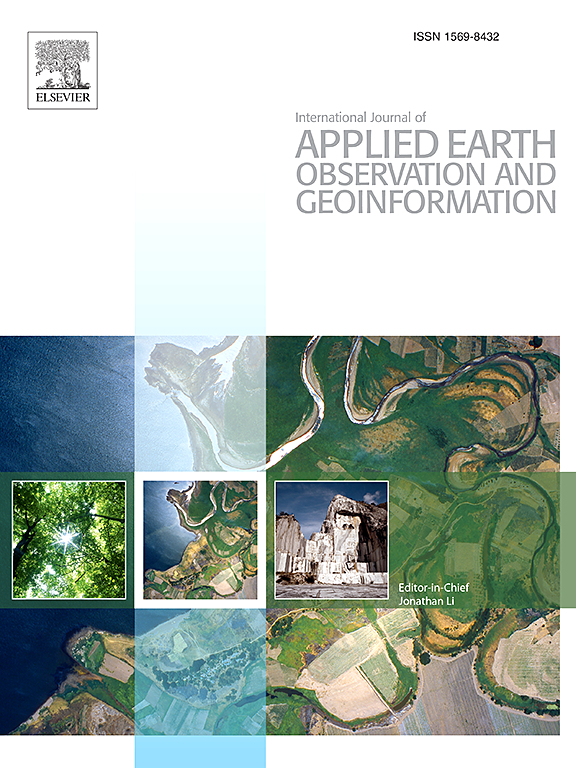SASTGCN: Semantic-Augmented Spatio-temporal graph convolutional network for subway flow prediction
IF 7.6
Q1 REMOTE SENSING
International journal of applied earth observation and geoinformation : ITC journal
Pub Date : 2025-04-11
DOI:10.1016/j.jag.2025.104530
引用次数: 0
Abstract
Deep learning based subway passenger flow prediction was widely employed to promote prediction accuracy, which is crucial for subway management and commercial infrastructure planning. However, the existing work ignored the semantic similarity inherent in the subway stations function, which can extract passengers and enhance prediction accuracy. In this work, a Semantic-Augmented Spatio-temporal Graph Convolutional Network (SASTGCN) model was proposed, which considered semantic similarity, spatiotemporal correlations and spatial heterogeneity to realize the passenger inflow and outflow prediction. The station function was derived from travel characteristics of passengers by data-driven method. The spatiotemporal block including Topology Adaptive Graph Convolutional Network (TAGCN) and ConvNeXt, constructed adaptive spatial topology, depthwise separable convolution and expanded receptive fields to capture spatiotemporal correlations and spatial heterogeneity. The SASTGCN model was validated with the card swiping data in Shanghai, the prediction ability and error analysis results demonstrated the performance outperform nine baseline methods, and the accuracy was improved by approximately 21%. The proposed model can provide inspiration for the follow-up research of passenger flow prediction, traffic pattern recognition and dynamic scheduling.
基于语义增强的时空图卷积网络的地铁流量预测
基于深度学习的地铁客流预测被广泛应用,以提高预测精度,这对地铁管理和商业基础设施规划至关重要。然而,现有的工作忽略了地铁站功能固有的语义相似度,这可以提取乘客,提高预测精度。本文提出了一种基于语义增强的时空图卷积网络(SASTGCN)模型,该模型考虑了语义相似性、时空相关性和空间异质性,实现了客流进出预测。采用数据驱动的方法,从乘客出行特征出发,推导出车站功能。时空块包括拓扑自适应图卷积网络(TAGCN)和卷积神经网络(ConvNeXt),构建自适应空间拓扑、深度可分卷积和扩展接收场来捕捉时空相关性和空间异质性。用上海市刷卡数据对SASTGCN模型进行了验证,预测能力和误差分析结果表明,该模型优于9种基线方法,准确率提高了约21%。该模型可为后续的客流预测、交通模式识别和动态调度等研究提供借鉴。
本文章由计算机程序翻译,如有差异,请以英文原文为准。
求助全文
约1分钟内获得全文
求助全文
来源期刊

International journal of applied earth observation and geoinformation : ITC journal
Global and Planetary Change, Management, Monitoring, Policy and Law, Earth-Surface Processes, Computers in Earth Sciences
CiteScore
12.00
自引率
0.00%
发文量
0
审稿时长
77 days
期刊介绍:
The International Journal of Applied Earth Observation and Geoinformation publishes original papers that utilize earth observation data for natural resource and environmental inventory and management. These data primarily originate from remote sensing platforms, including satellites and aircraft, supplemented by surface and subsurface measurements. Addressing natural resources such as forests, agricultural land, soils, and water, as well as environmental concerns like biodiversity, land degradation, and hazards, the journal explores conceptual and data-driven approaches. It covers geoinformation themes like capturing, databasing, visualization, interpretation, data quality, and spatial uncertainty.
 求助内容:
求助内容: 应助结果提醒方式:
应助结果提醒方式:


